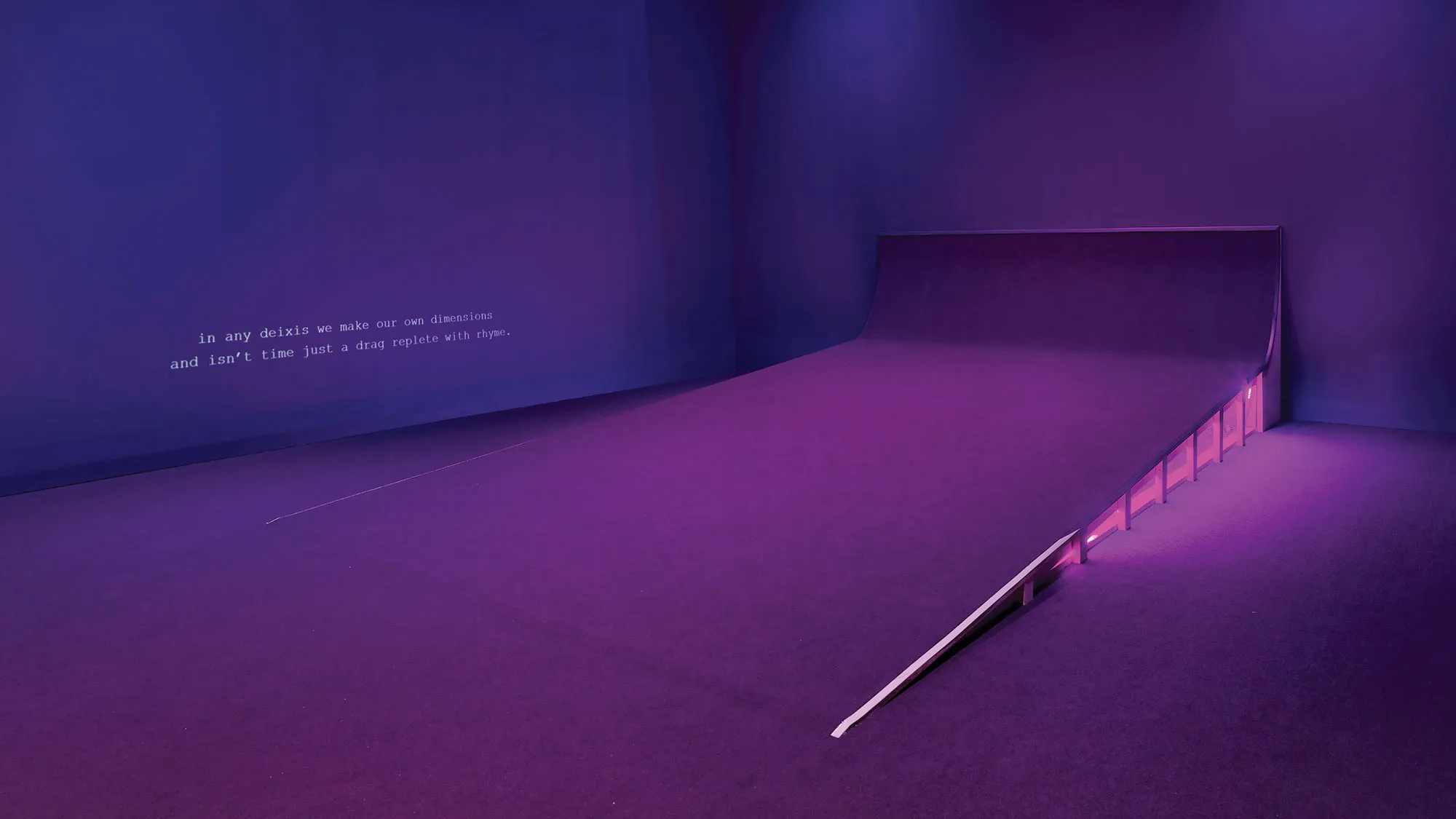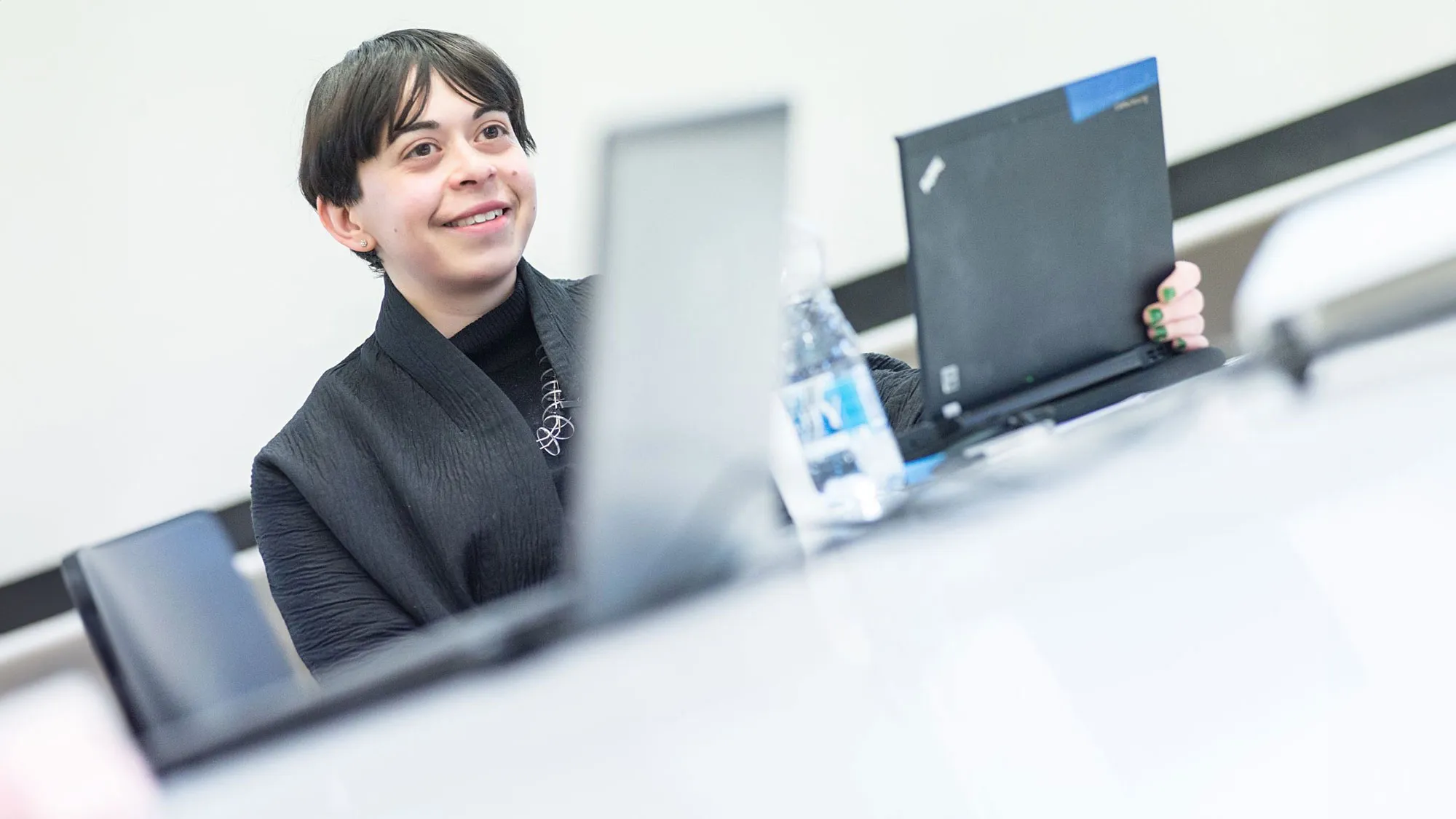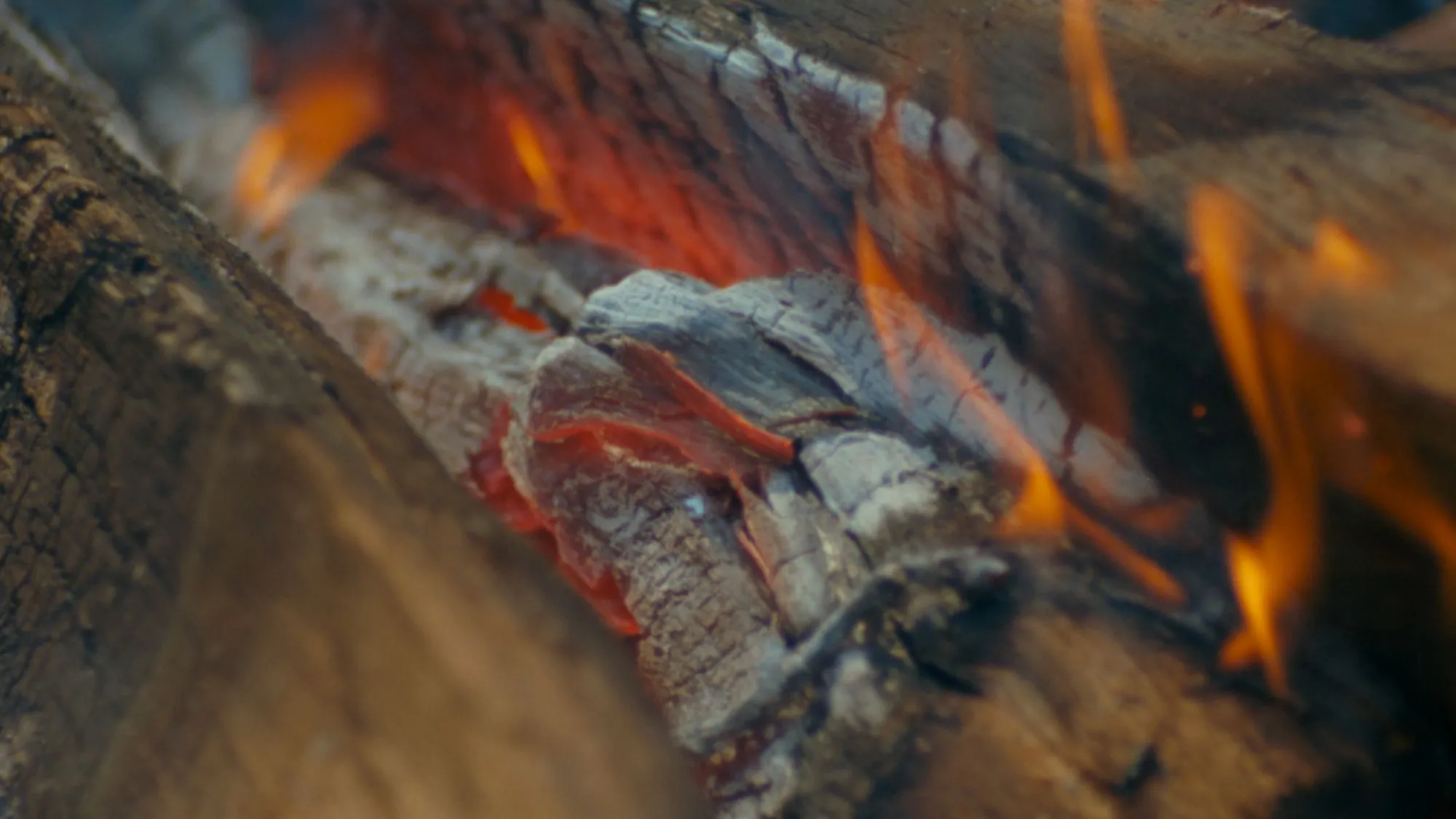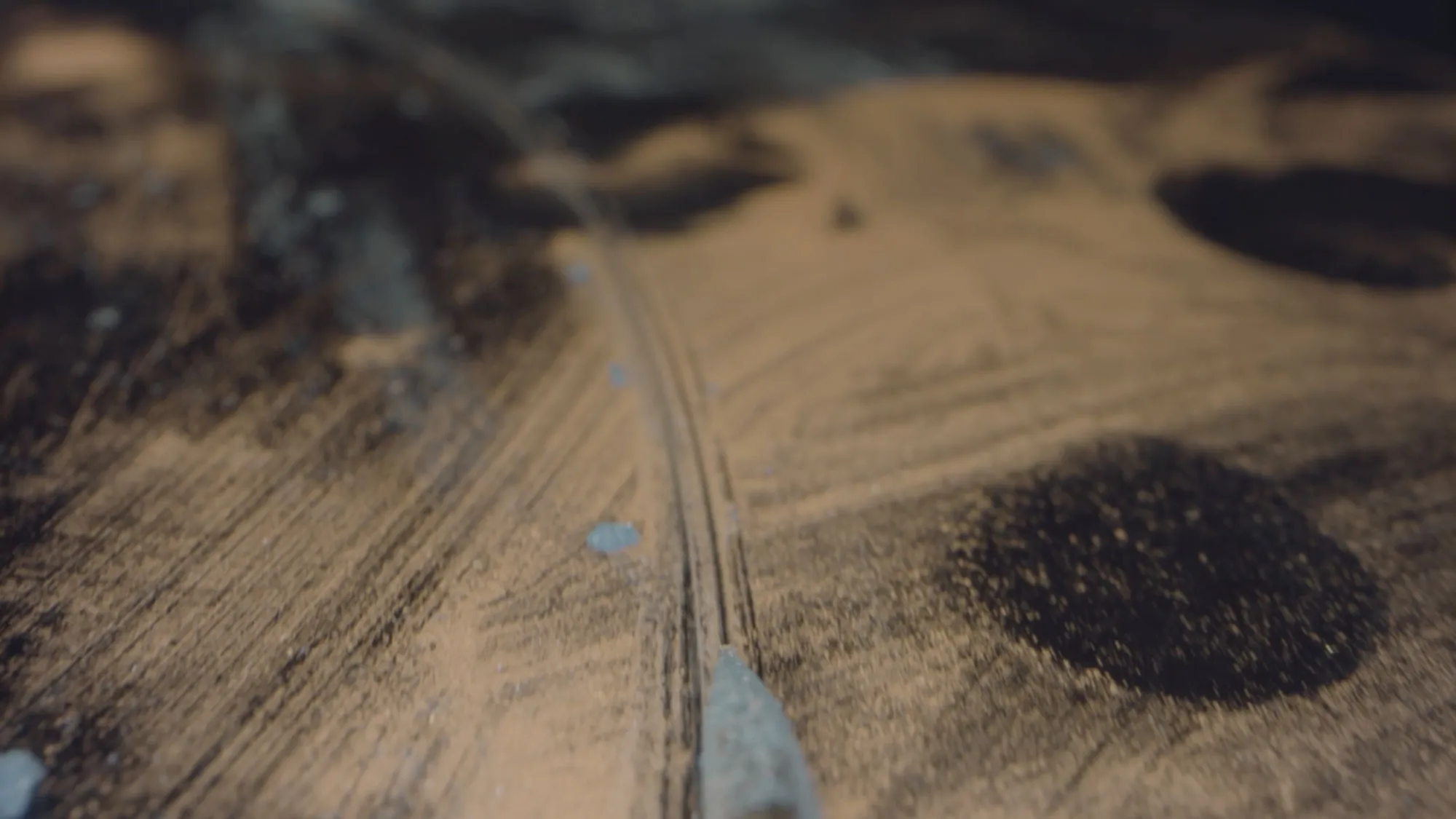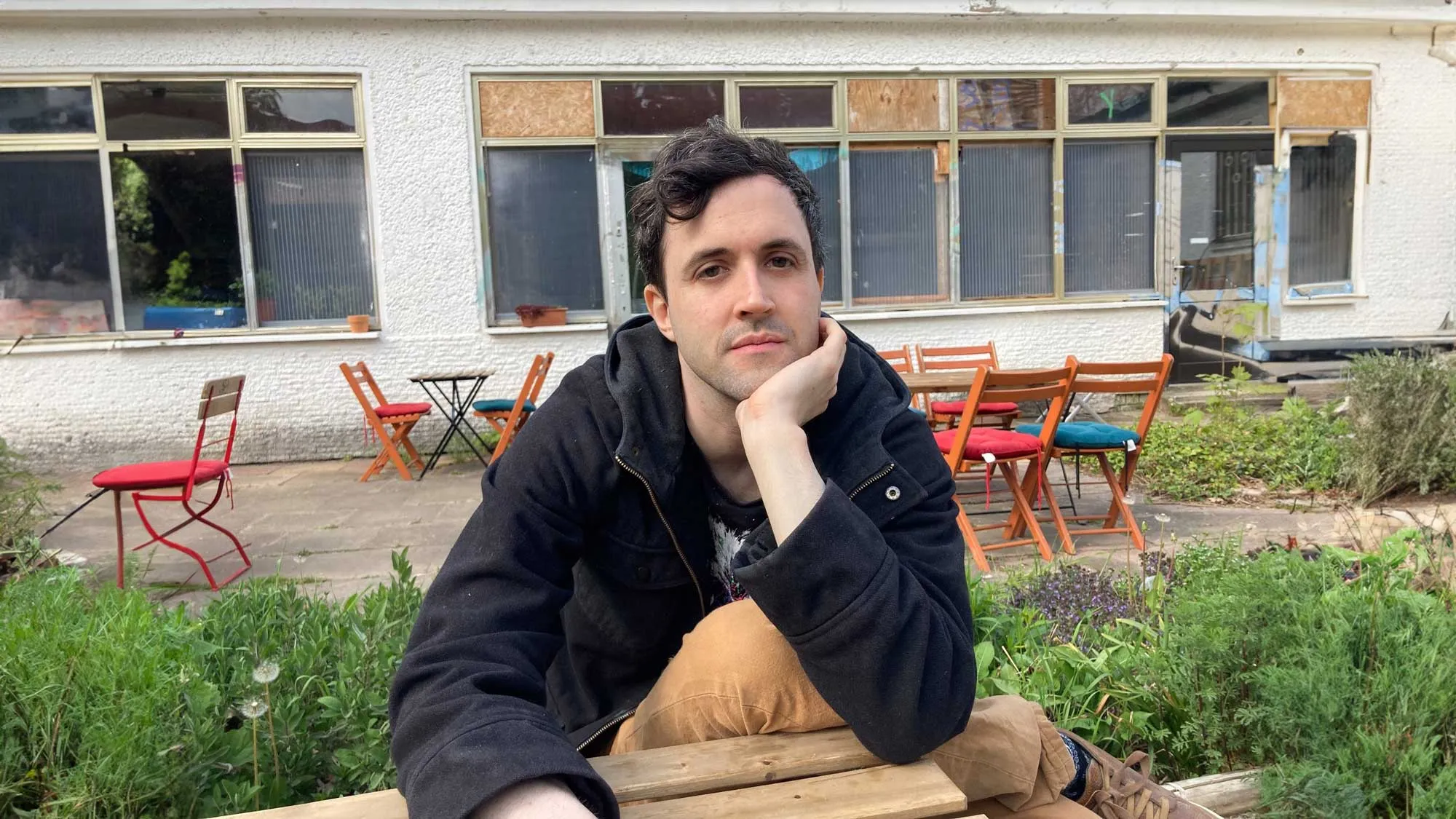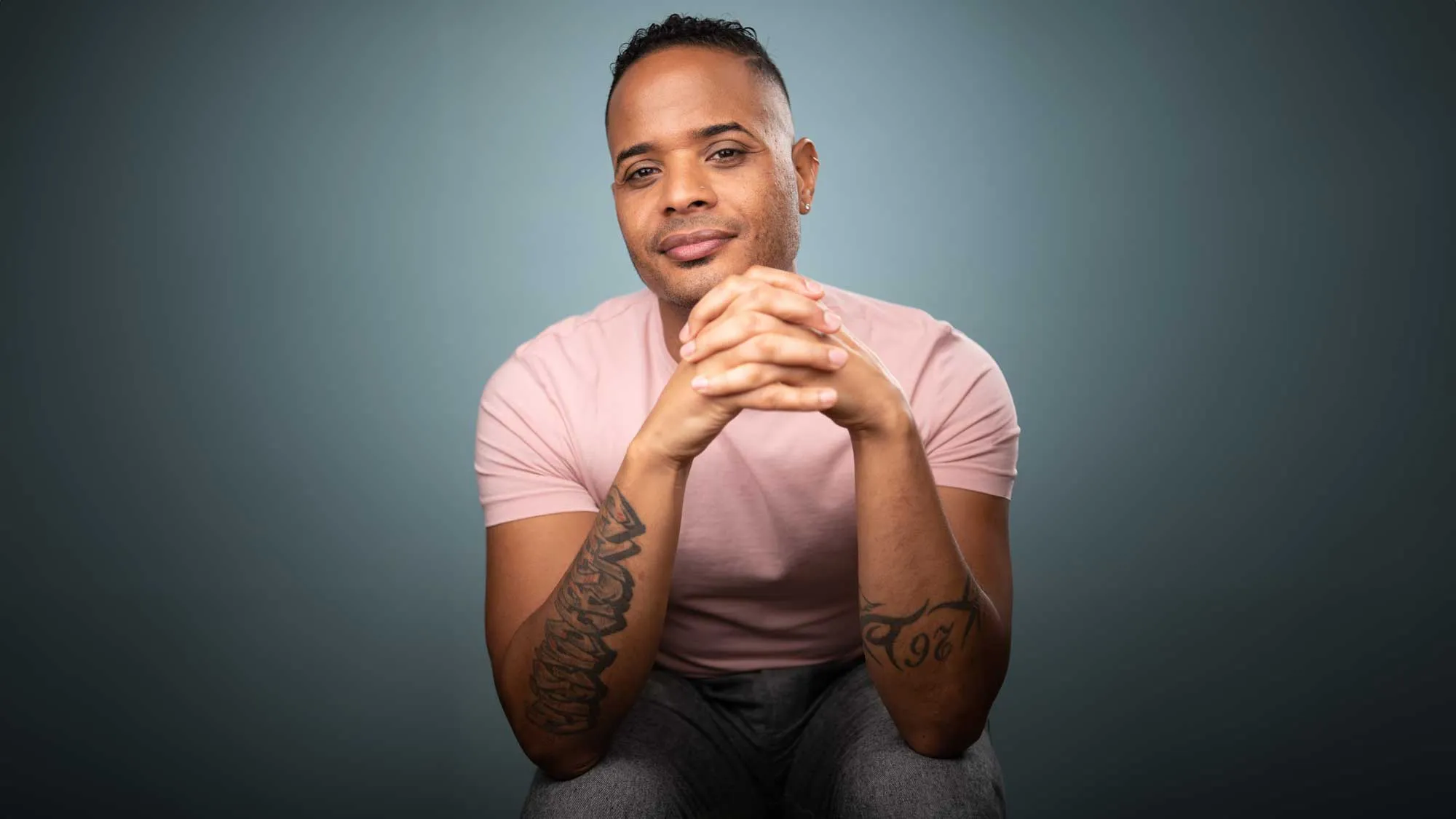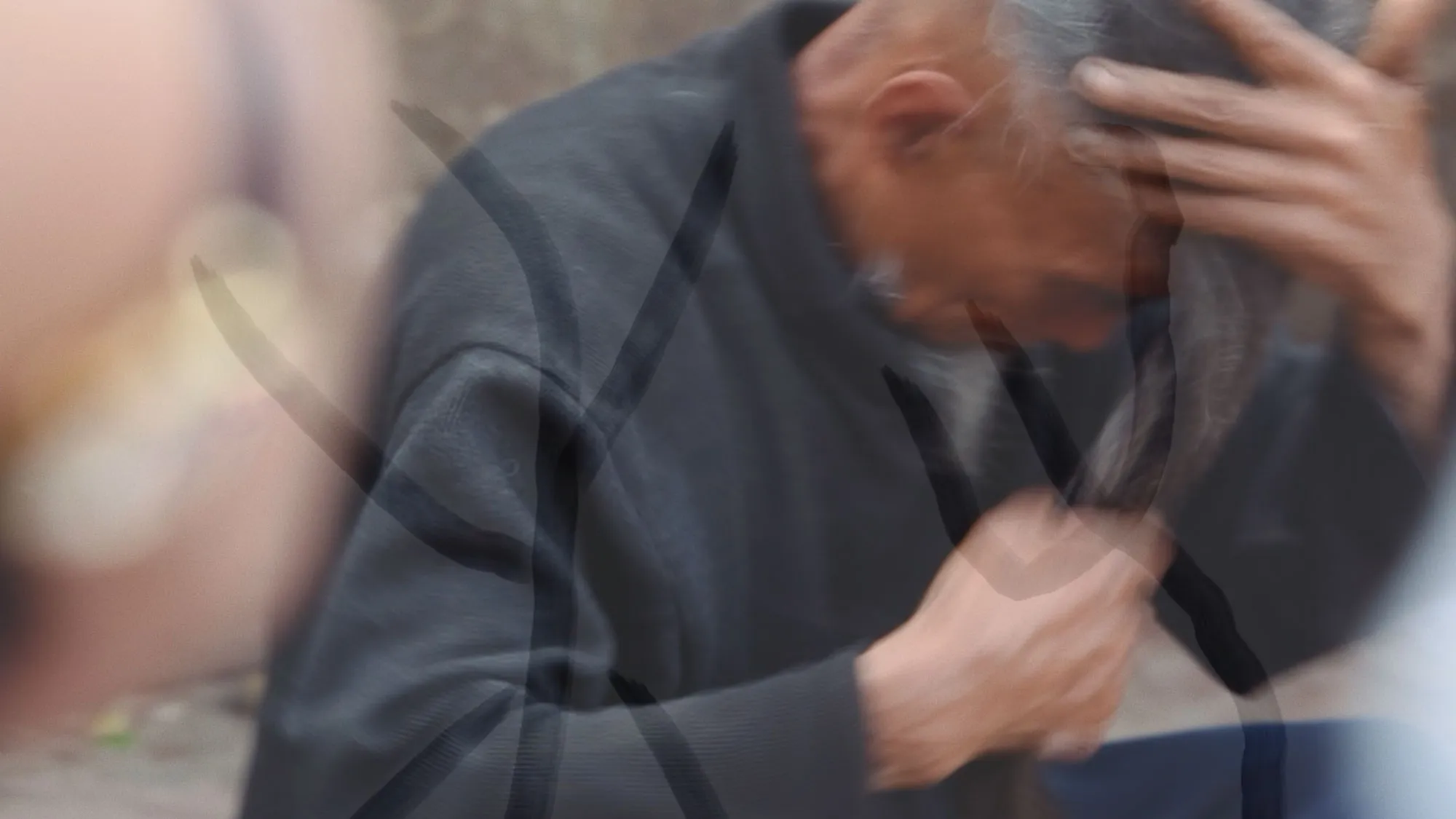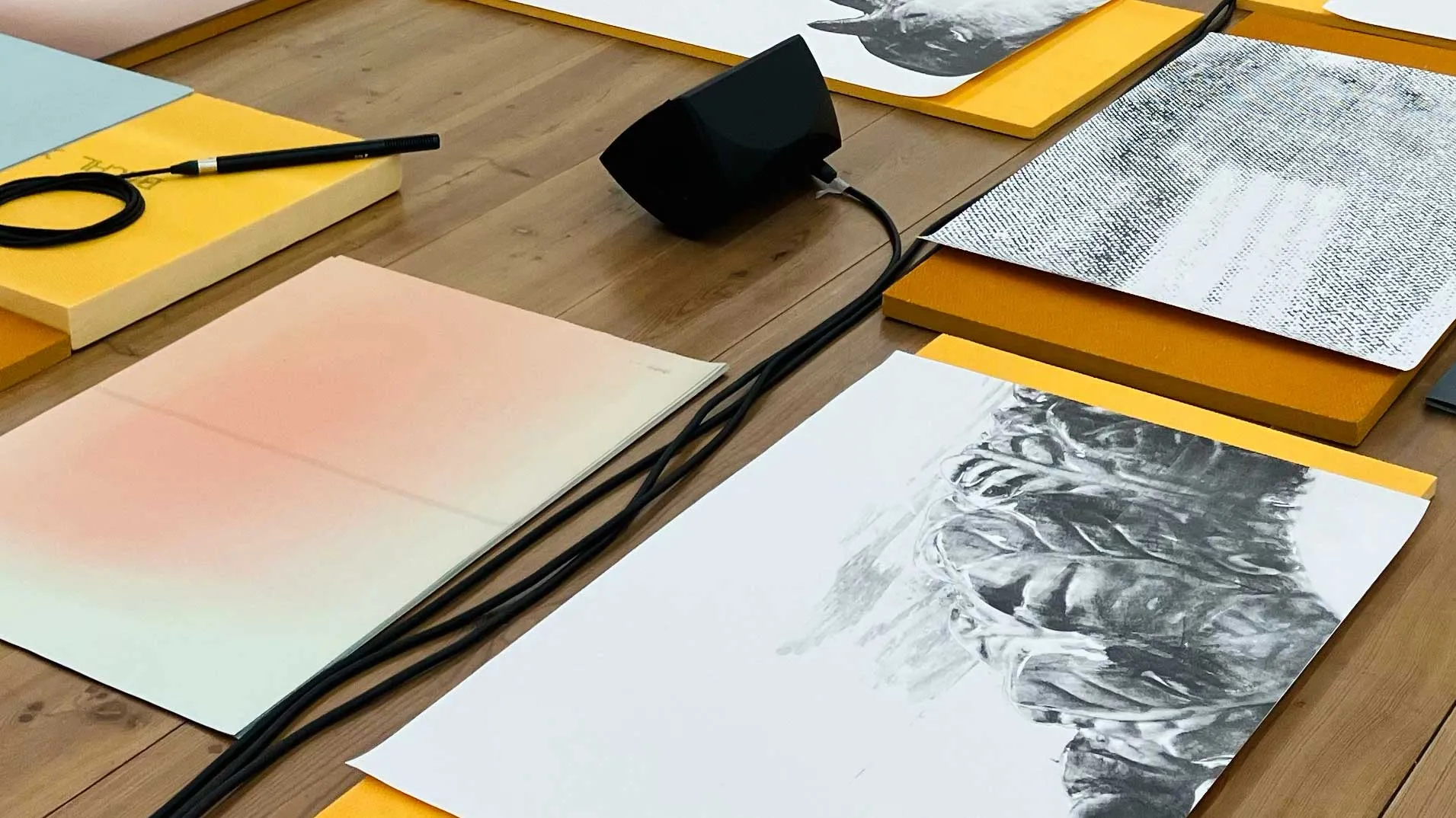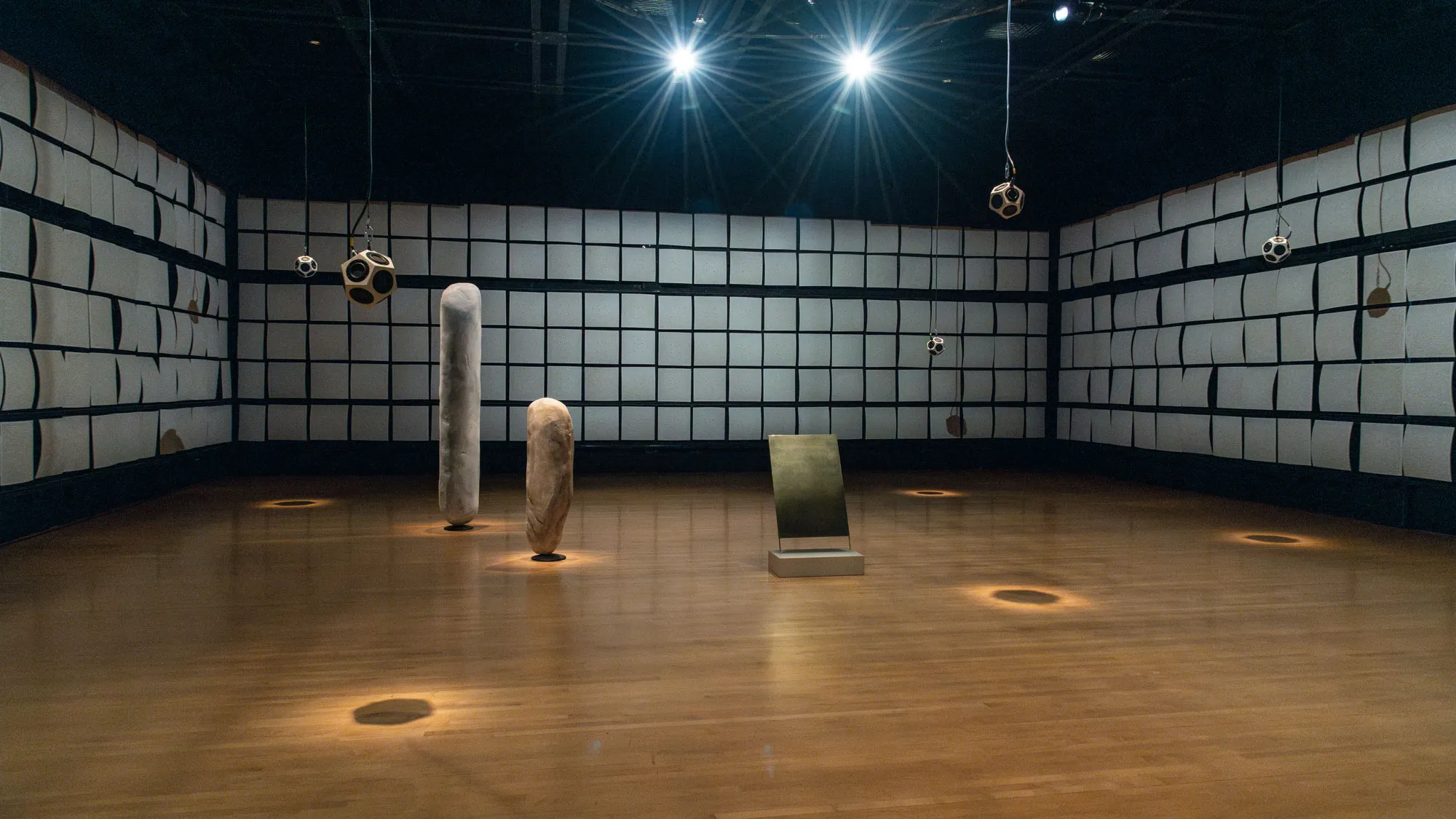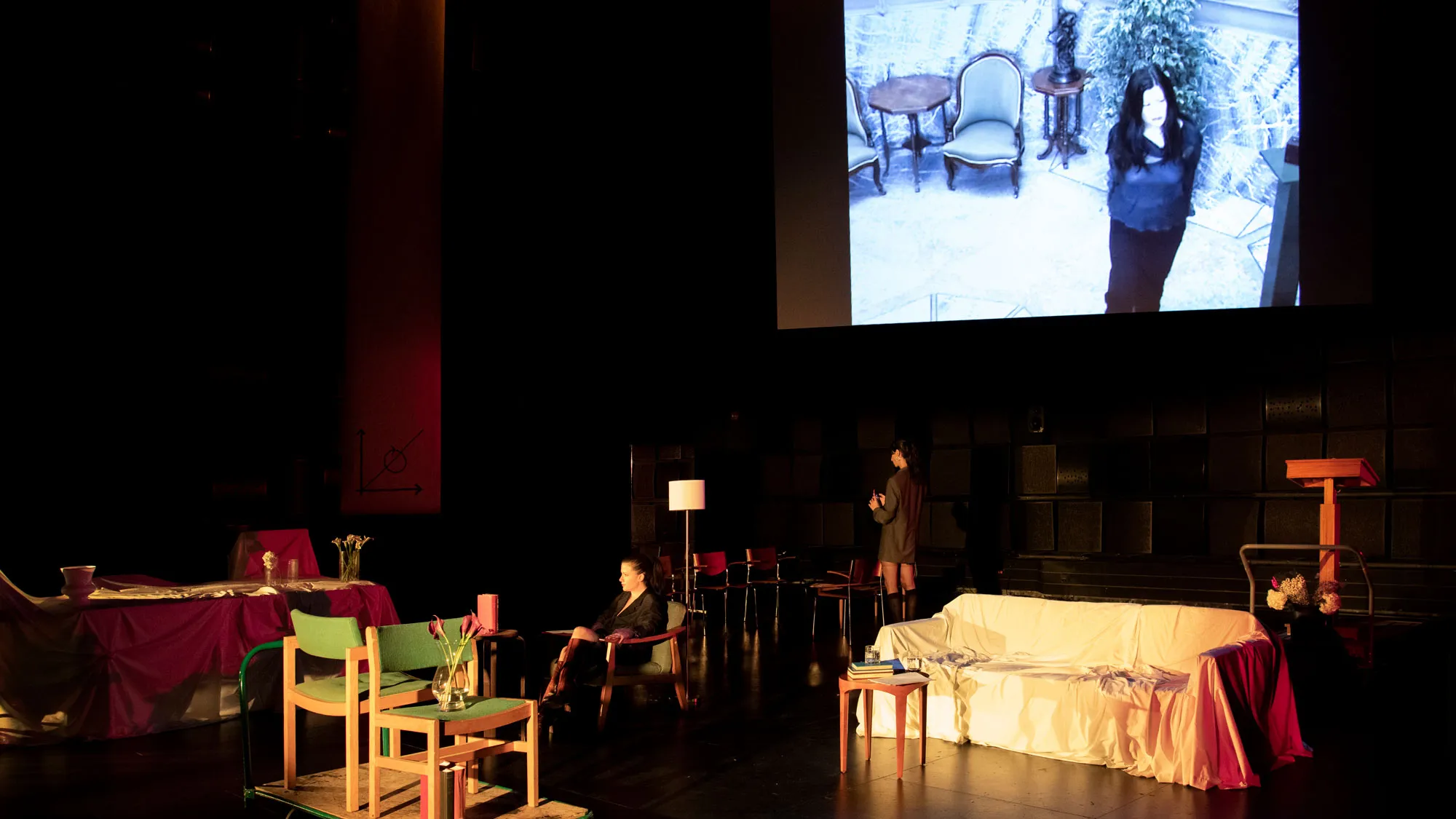
Permanent Trespass (Beirut of the Balkans & the American Century)
Permanent Trespass (Beirut of the Balkans & the American Century) is a performance jointly authored and performed by filmmaker Bassem Saad and writer Sanja Grozdanić that opens up a complex grammar of mourning in the face of impersonal, legal accounts of collective grief. The piece contends with the temporal, political, and intellectual fallout of so-called post-conflict societies beset by imperialist violence in the 20th century. Its plot centers on two traveling eulogists who encounter one another in a declining architectural estate. They must contend with the sense of an ending–of an epoch, of a revolution, of a regime.
Over the course of the performance, the project's characters gradually open up a dreamlike grasping after the principles of revolutions and their failures. Riffs off official political stances rupture suddenly into unfettered expressions that ride collective affects of public feeling and dissidence. The work touches on parallel histories--such as the breakdown of the former Yugoslavia and ongoing crises in and around Lebanon--as it shifts between the openly tragic and the melancholically absurd. What starts out as a formal reflection on a sort of "professional mourning" eventually unravels into a very different sort of historical reckoning.
This version of the performance, commissioned by EMPAC, expands the artists’ original script-based work to encompass a new sound score, film material, and additional experimental projection. Reflecting the artists’ iterative working method, this presentation includes material from their in-progress film of the same name, plus archival footage.
The artists approach this expanded version of Permanent Trespass as a cinepoem, building on avant-garde techniques for merging the sensibility of poetic writing with the possibilities of cinematic footage.
Main Image: Bassem Saad and Sanja Grozdanić, Permanent Trespass (Beirut of the Balkans and the American Century), performance documentation, 2024. Courtesy the artists. Photo: Michael Valiquette / EMPAC.
